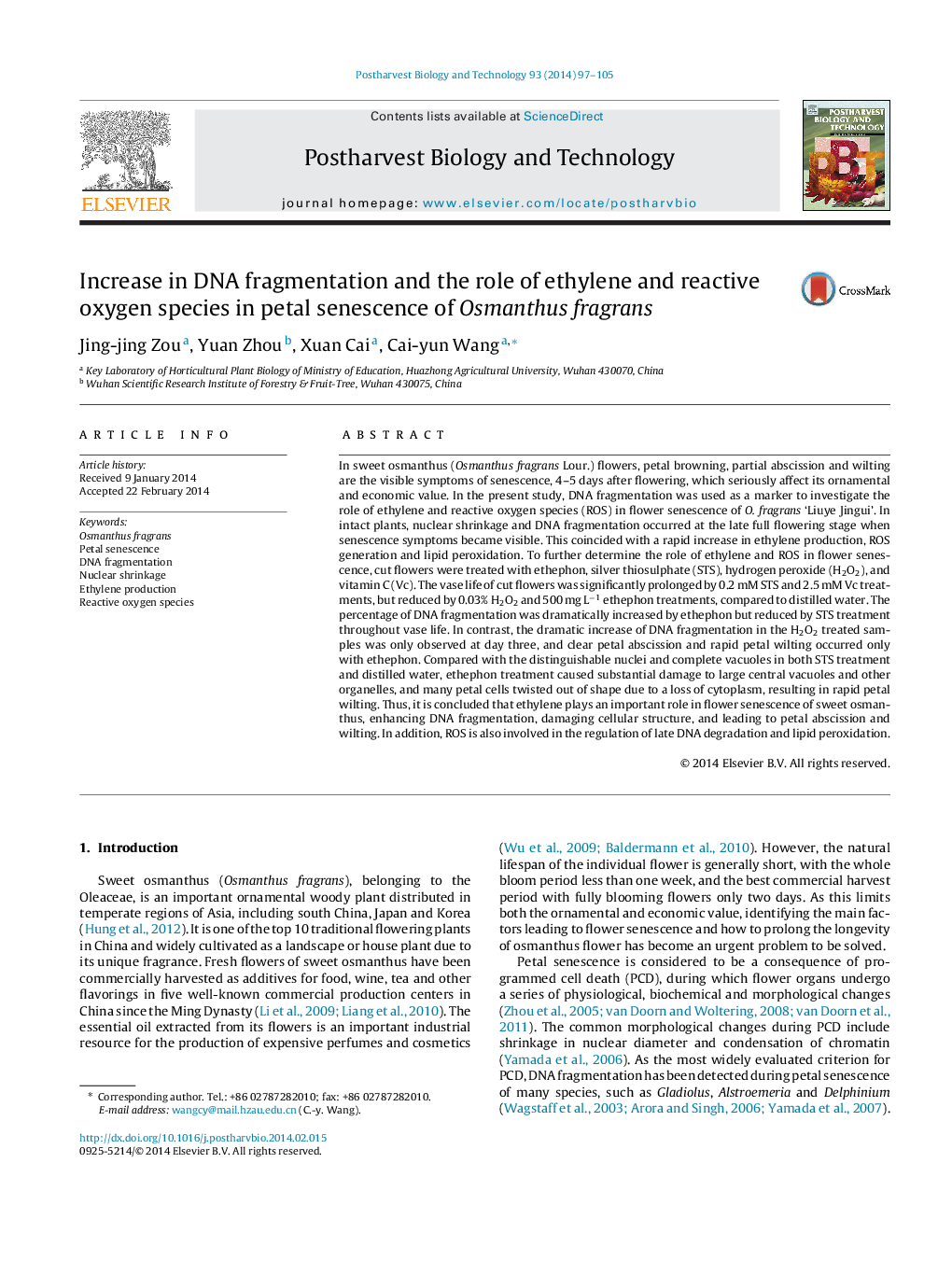| Article ID | Journal | Published Year | Pages | File Type |
|---|---|---|---|---|
| 4518300 | Postharvest Biology and Technology | 2014 | 9 Pages |
•Two indicators of programmed cell death, nuclear shrinkage and DNA fragmentation, were detected during flower senescence in the intact plant of Osmanthus fragrans.•Cut osmanthus flowers were sensitive to ethylene and petal abscission was mediated by ethylene.•Both ethylene and reactive oxygen species regulated DNA fragmentation.•Ethylene caused substantial damage to cellular structure.
In sweet osmanthus (Osmanthus fragrans Lour.) flowers, petal browning, partial abscission and wilting are the visible symptoms of senescence, 4–5 days after flowering, which seriously affect its ornamental and economic value. In the present study, DNA fragmentation was used as a marker to investigate the role of ethylene and reactive oxygen species (ROS) in flower senescence of O. fragrans ‘Liuye Jingui’. In intact plants, nuclear shrinkage and DNA fragmentation occurred at the late full flowering stage when senescence symptoms became visible. This coincided with a rapid increase in ethylene production, ROS generation and lipid peroxidation. To further determine the role of ethylene and ROS in flower senescence, cut flowers were treated with ethephon, silver thiosulphate (STS), hydrogen peroxide (H2O2), and vitamin C (Vc). The vase life of cut flowers was significantly prolonged by 0.2 mM STS and 2.5 mM Vc treatments, but reduced by 0.03% H2O2 and 500 mg L−1 ethephon treatments, compared to distilled water. The percentage of DNA fragmentation was dramatically increased by ethephon but reduced by STS treatment throughout vase life. In contrast, the dramatic increase of DNA fragmentation in the H2O2 treated samples was only observed at day three, and clear petal abscission and rapid petal wilting occurred only with ethephon. Compared with the distinguishable nuclei and complete vacuoles in both STS treatment and distilled water, ethephon treatment caused substantial damage to large central vacuoles and other organelles, and many petal cells twisted out of shape due to a loss of cytoplasm, resulting in rapid petal wilting. Thus, it is concluded that ethylene plays an important role in flower senescence of sweet osmanthus, enhancing DNA fragmentation, damaging cellular structure, and leading to petal abscission and wilting. In addition, ROS is also involved in the regulation of late DNA degradation and lipid peroxidation.
